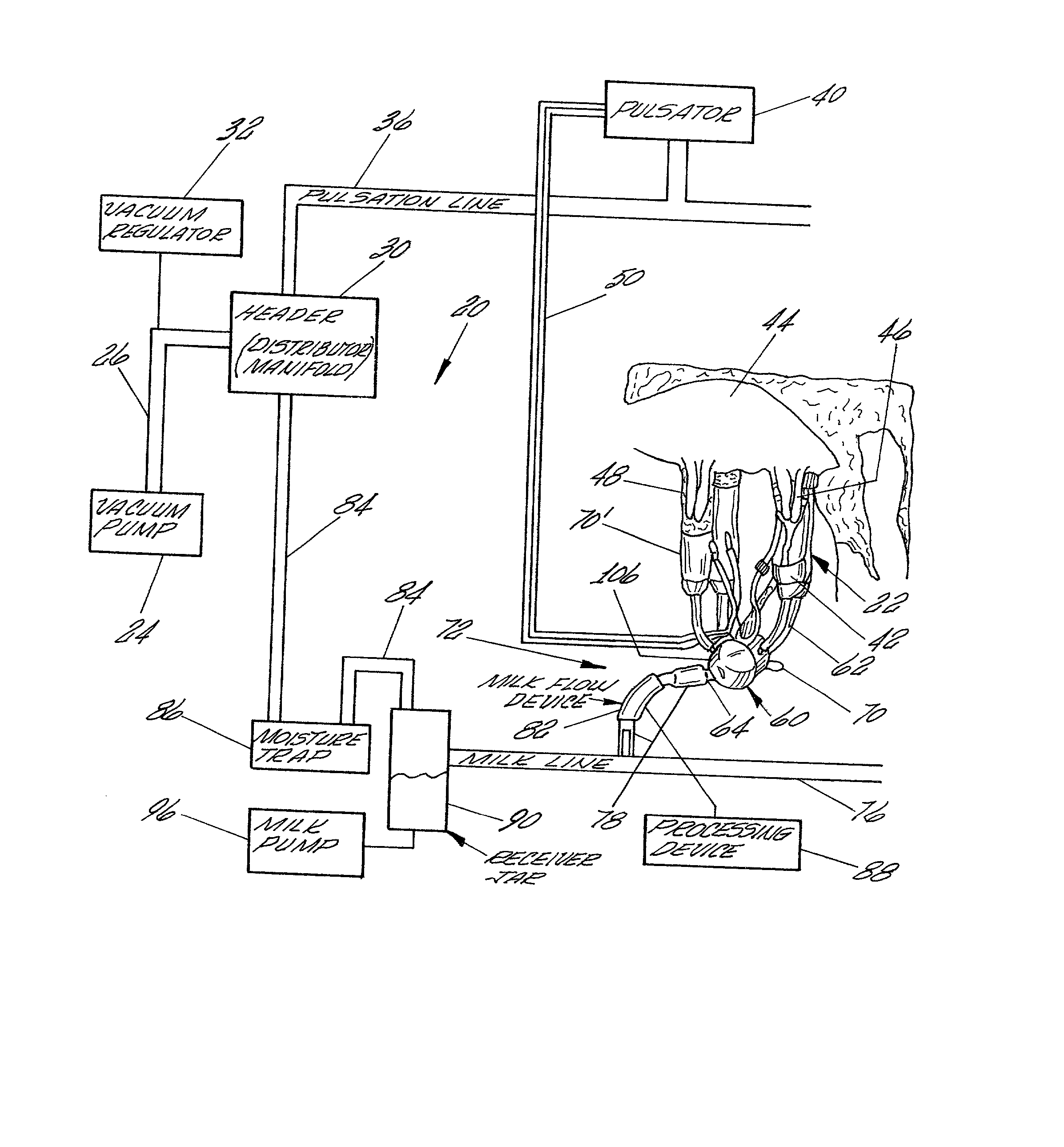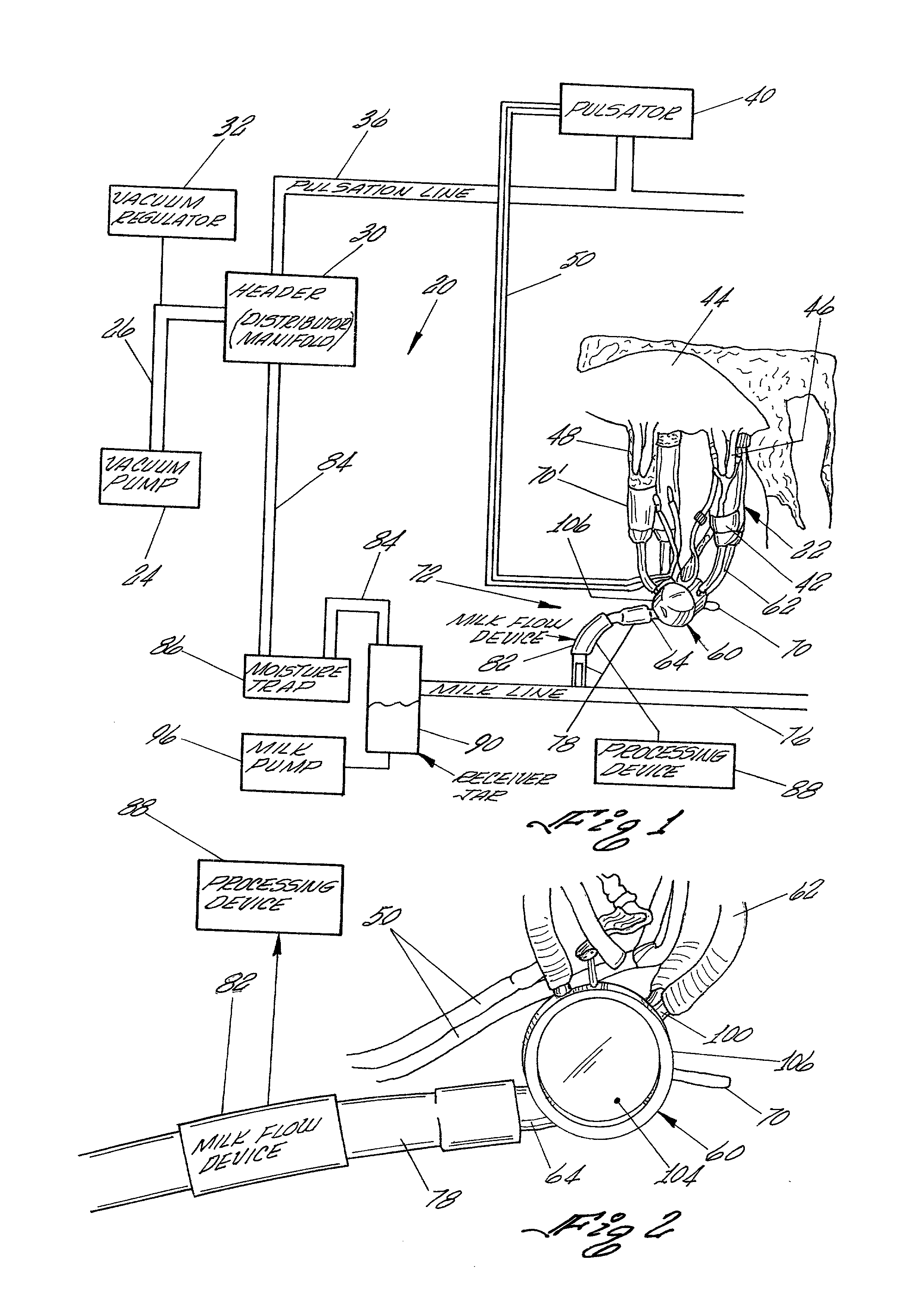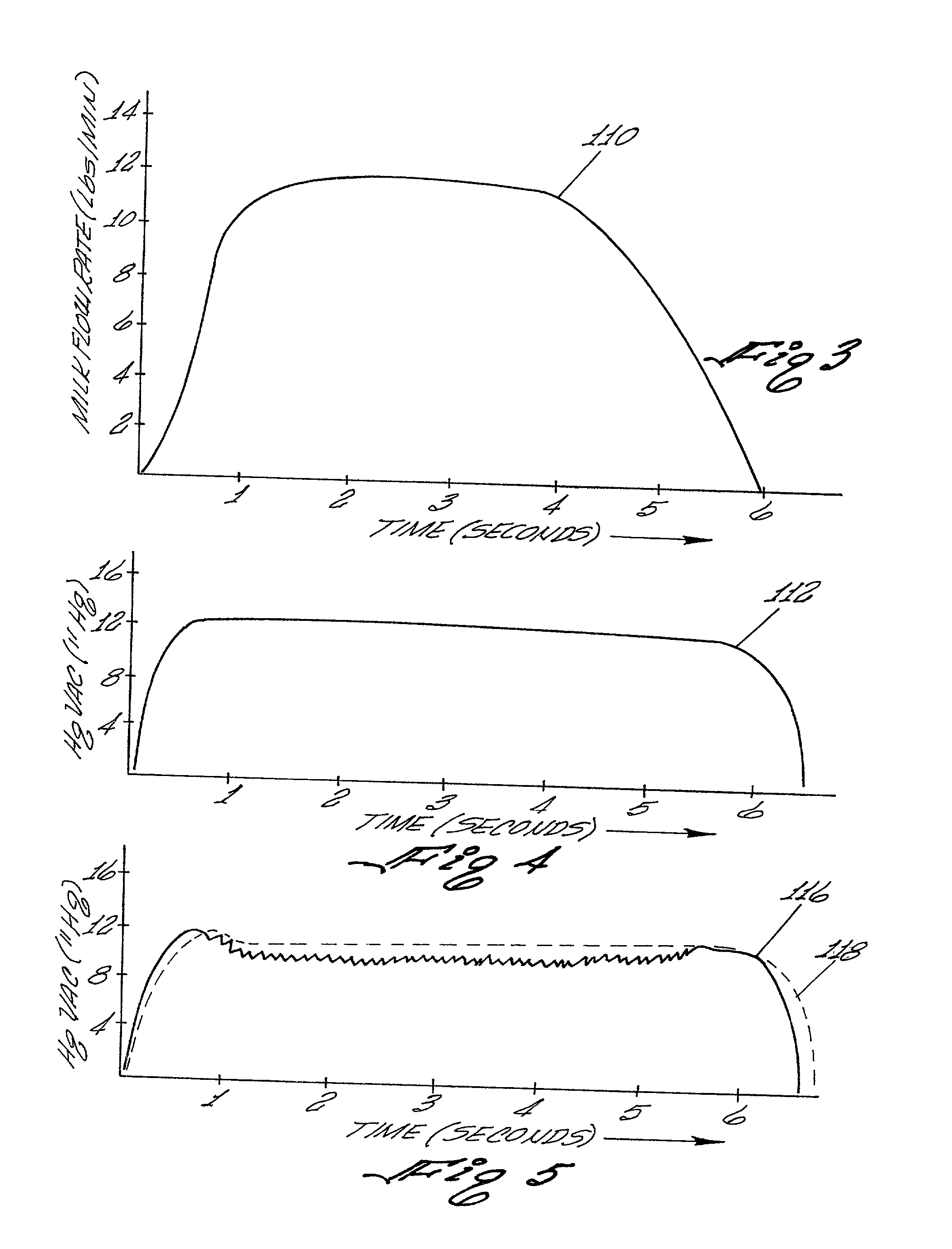Method for measuring flow rate of a continuous fluid flow
a continuous fluid flow and flow rate technology, applied in the direction of liquid/fluent solid measurement, instruments, machines/engines, etc., can solve the problems of occlusion of no prior art milk flow meters provide for reducing mastitis, etc., to improve the health of the animal or cow, prolong the use of the milk flow meter, and stable vacuum level
- Summary
- Abstract
- Description
- Claims
- Application Information
AI Technical Summary
Benefits of technology
Problems solved by technology
Method used
Image
Examples
Embodiment Construction
[0100] In order to explain the operation of the milking system 20 including a milk flow device 82 using the teachings of the present invention, the following operating example is provided.
[0101] Typically, in a milking system 20, the preset vacuum level is established at approximately 12 inches Hg (12" Hg). A milking cycle of a cow to be milked using the present invention may be in the order of about 6 minutes. During the milking process, approximately 45 pounds of milk may be withdrawn from the cow. The relationship of pounds per minute for each minute of the milking cycle for the above example is as follows:
1TABLE 1 Pounds of Milk Cumulative Pounds of Minute of per Minute Milk Withdrawn Milking Cycle (lbs / min) During Milking Cycle Minute 1 5 5 Minute 2 through Minute 4 12 36 Minute 5 and Minute 6 Approximately 45 2.5
[0102] Referring now to the chart illustrated in FIG. 3, the chart plots as curve 110 the milk flow rate as function of time during the above described milking cycle o...
PUM
 Login to View More
Login to View More Abstract
Description
Claims
Application Information
 Login to View More
Login to View More - R&D
- Intellectual Property
- Life Sciences
- Materials
- Tech Scout
- Unparalleled Data Quality
- Higher Quality Content
- 60% Fewer Hallucinations
Browse by: Latest US Patents, China's latest patents, Technical Efficacy Thesaurus, Application Domain, Technology Topic, Popular Technical Reports.
© 2025 PatSnap. All rights reserved.Legal|Privacy policy|Modern Slavery Act Transparency Statement|Sitemap|About US| Contact US: help@patsnap.com



